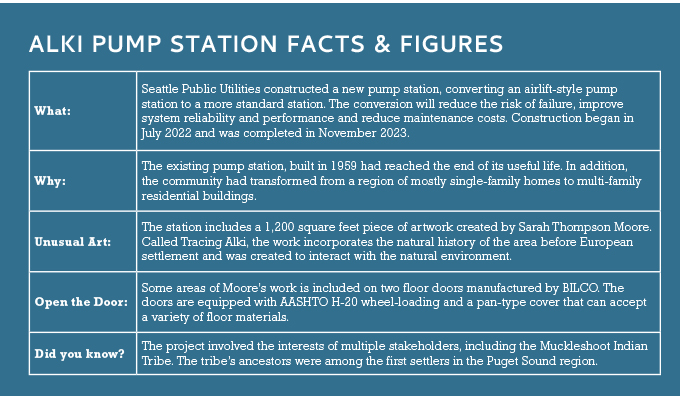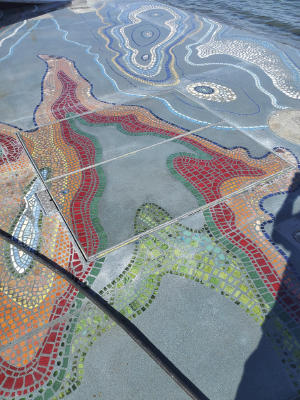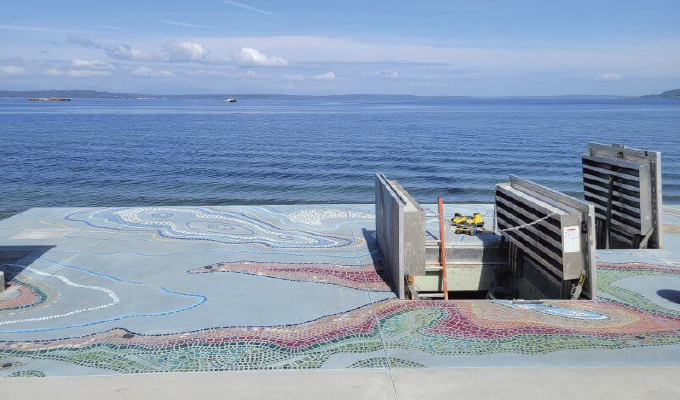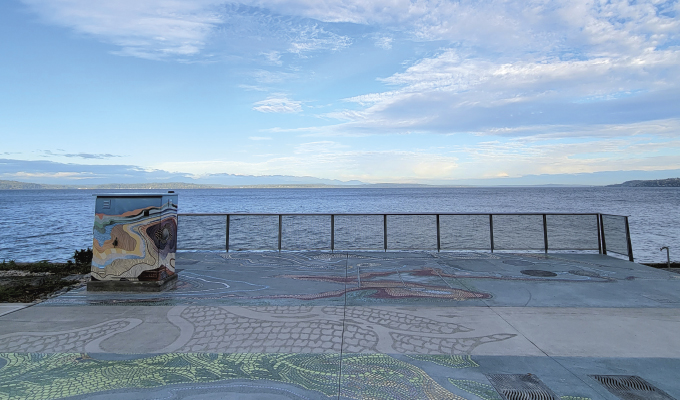A thirty-seven-unit condominium project celebrated its grand opening last year along Seattle’s Alki waterfront, bringing a resort lifestyle to residents of the units. In a nation in which many people covet residential spaces on shorelines, it illustrates a dynamic that is playing out in other sections of the United States.
The project was developed by Vibrant Cities, which builds multifamily properties in Seattle and Portland. The buildings are “strategically positioned in sought-after neighborhoods and are purposefully designed with building community in mind,’’ according to the Vibrant Cities website. The Seattle project broke ground in 2019 and was the largest condo project planned for West Seattle in 2020. It took Vibrant Cities and a previous property owner twenty-three years to assemble five waterfront parcels for the project.
Development is nothing new along Alki Beach, which overlooks Puget Sound and offers scintillating views of Seattle’s skyline. Many of the area’s single-family homes have been replaced with multi-family residences. Such transformations, however, can result in unintended consequences.
The Alki Pump Station, which was built in 1959, had reached the end of its useful life. But the area’s population growth and addition of multi-family housing also played a role in the plan by Seattle Public Utilities to renovate the station, which is essential for moving sewage and storm water from the surrounding area to a water treatment facility. More homes mean a city’s infrastructure grid needs major updating, and many U.S. cities have had to adapt to the change.
The renovated pump station opened last year, and Seattle Public Works converted the airlift style facility to one that uses centrifugal pumps. SPW also incorporated art into the project. Using a variety of materials and textures, artist Sarah Thompson Moore created “Tracing Alki.” While a project very much a part of Seattle’s present and future, it also honors the region’s past.
“This project seized an opportunity to turn an otherwise unremarkable space into one that the public can truly appreciate, and it invites the public to better understand our wastewater system and our connection with the surrounding water bodies,’’ says Avery Reger, P.E. of SPU.

SYSTEM CONVERSION
In 2015, Seattle evaluated all thirteen of its airlift-type wastewater pump stations. Each evaluation looked at several factors such as parcels served, flow projects, and options for improvement. The Alki pump station was recommended as the highest priority for retrofitting.
“Airlift pumps were installed primarily due to solids (in the pumped liquid) that tend to plug and wear out other types of wastewater pumps,” according to an SPU report. “However, these airlift pumps are obsolete and deteriorated—demanding frequent maintenance and subject to availability of replacement parts and equipment.”
In addition, Reger says centrifugal pumps have become the norm for moving wastewater. “Increased electrical and hydraulic efficiency and ease of maintenance are just some of the benefits of electrically driven centrifugal pumps,’’ he says.
The retrofit required dismantling and removing the existing airlift system. Crews also converted the existing structure into a separated wet well and dry wall configuration.
Workers also replaced the 8-inch diameter force main with a 6-inch diameter force main; upgraded electrical and structural components and installed underground ventilation ducting, ducting and irrigation pipe. SPU also added a safety guardrail along a seawall to protect the site. SPU estimated the cost of the project at $1.2 million.
The conversion will reduce the risk of failure, improve system reliability and performance, and reduce maintenance costs. “The goal of the project was to improve the performance and reliability of the facility while also bringing it up to modern construction codes,’’ Reger says.

WORK OF ART
From the project’s inception, artwork was planned to be incorporated into the project. “Site improvements would include a concrete pad with public art, a protective guardrail atop the adjacent seawall, and landscape plantings featuring plants native to the Seattle area,’’ SPU says in its proposal.
Thompson Moore was selected to develop the project. Her work was inspired by a topographical map of Seattle printed in 1894 and took four years to create.
“Through the use of iridescent and light refractive materials and a variety of textures, the artwork was created to interact with the natural environment, offering a unique experience with each visit,’’ Moore writes on her website. Moore said the project incorporates the natural history of the area before European settlement, bringing to light the changes that have occurred since then. She took into the account the interests of various stakeholders, including the Muckleshoot Indian Tribe, whose forefathers inhabited the region for centuries before non-Indian settlement.
Determining how to incorporate Moore’s work into the site was logistically challenging. “One major complexity of construction involved the installation of the tile artwork,’’ Reger says. “The tiles needed to be installed integrally with the freshly poured concrete. The process started with the artist loosely gluing the intricate design of tens of thousands of tiles on a fabric scrim at their studio.”
The project covers 1,200 square feet, and the area was divided into manageably sized panels while concrete was poured and tooled.
CREATIVE SOLUTION
Some of the tiles were placed on two floor doors manufactured by BILCO, the manufacturer of specialty access products. One door was a 5-foot x 5-foot double leaf door, and the other was a single leaf door that measured 3-feet, 3-inches by 3-feet, 9-inches.
The doors are also equipped with a pan-type cover that can accept a variety of flooring materials. The cover is designed with a 1-inch fillable pan for field installation of architectural flooring material. The doors allow access to equipment for repair and replacement of parts.
The doors are equipped with AASHTO H-20 wheel-loading, which allows for truck axle loading of 32,000 pounds.
In most instances, the BILCO terrazzo doors are used for interior applications. It’s also uncommon for doors with the pan design to be included on H-20 doors. Harbor Pacific Contractors procured the doors for the project from Anderson Specialties, BILCO’s manufacturer’s representative in Seattle.
“BILCO hatches were submitted by contractor and met the design requirements,’’ Reger says. “There were limited manufacturers that could produce a hatch with an inlay pan for the concrete and tile artwork that was to be installed. Being able to extend the artwork on to the hatches was important for the artist’s vision and hides them in plain sight without affecting the accessibility of the station.”
SPU held an outreach event in December 2023 and Reger said the community has embraced the project, which is located in an area popular for walkers, runners, nearby residents out for a stroll with their pets and other recreational pursuits.
“The feedback from the community was very positive,’’ Reger says. “Many people praised the thought-provoking, highly detailed artwork and had an appreciation for the dedication and effort of everyone involved to deliver a unique and enjoyable space.”

Thomas Renner writes on building, engineering and other trade industry topics for publications throughout the United States. The BILCO Company has served the building industry since 1926. During these years it has built a reputation among architects, engineers, specifiers, and the construction trades for dependability and for products that are unequaled in design and workmanship. For more information, visit www.bilco.com.


